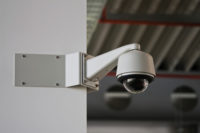Scalable? No Problem

How well a hardware or software platform can adapt to increasing demands defines the term scalability. This term is becoming the de facto reason why the security industry has been replacing older DVRs with newer storage solutions. The popularity of video encoder devices as standalone appliances versus bundled into the DVR is accelerating this industry shift even further.
Scalable video storage solutions are essential to building a cost effective, adaptable security foundation that addresses the increasing requirements from changing levels of risk and new integration requirements. New government regulations and technological advances that show no sign of slowing are pressuring the physical security industry. Professionals responsible for making decisions about technology platforms that will remain useful for three to five years amidst these changes turn to scalable solutions to safeguard their investments.
Fortunately for physical security directors, enterprise IT storage directors have faced similar problems every day for the past seven years, and are experts in scalable storage solutions. However, their expertise has been typically applied to the data center only, and has not extended to the edge of the solution where the security directors work. However, if the two directors can work together, they can solve this physical security storage problem by leveraging the same technology, standards and support expertise.
IBM, EMC and newer providers like Intransa have proven their expertise in scalable storage solutions. However, the market is broken into three cost and technological categories: direct attached storage (DAS), network attached storage (NAS) and storage area networks (SAN). Each of these has advantages and disadvantages, which are discussed here.
Direct Attached Storage
Direct attached storage is the oldest of the solutions and is still quite common. It is server-centric because it is directly attached to the data network, as its name implies. These systems tend to be preferred in standalone server environments, where the solution is not integrated with other systems. DAS also tends to provide the fastest throughput of all systems. However, because of its server-centric design, it provides only limited scalability, and because it does not integrate well with other systems, it is difficult to manage in a changing environment. These systems also tend to be single server and storage manufacturer-based systems and have strict distance requirements for connecting cable lengths.
Network Attached Storage
Network attached storage systems have been one of the most successful storage solutions as a modern file server. Being network-centric allows NAS devices to support any other network devices with no distance limitations. Because of the high number of manufacturers, the NAS market has driven the cost per terabyte down to less than $750. NAS systems are well suited for use within scalable storage solutions serving the needs of physical security.
Storage Area Networks
Storage area networks are the current standard for scalable storage solutions and are broken into two types: iSCSI and fibre channel-based systems. Although fiber channel systems are most mature, iSCSI is the most promising for the physical security industry. The key difference is the networking technology used to transmit data from the server to the storage device.
iSCSI based SANs have all of the data protection technologies that fiber channel have, without all of the expense. In fact, these systems use industry standard Ethernet cables and switches to connect the servers to the storage solution. In addition, iSCSI is well suited for deployment out of the data center because it has a compact form factor, is rack mounted and comes in a wide range of sizes. It does not require the IT staff to have a specialized technical skill set like fibre channel, making it easy to support. But the most important characteristic of iSCSI SAN is how cost effective it is – commonly found for less than $1,500 per terabyte.
Best Practices
When designing a solution using iSCSI SAN technology, storage capacities can be easily changed and modified because the solution is not dependent on a single camera or server type. This allows for the greatest amount of flexibility and customization, which is likely why both Pelco and Bosch have selected iSCSI as their SAN platform.
Looking into the future of physical security, the only thing certain is that risks and threats will continue to change, requiring a security hardware and software platform that can easy adapt. Building the foundation on a scalable storage solution will enable physical security directors to confidently add the best of breed components without having to perform expensive system upgrades to support the latest technology. With the partnership of enterprise IT directors, these storage solutions can be easily integrated with other systems to provide a broad enterprise value.
Looking for a reprint of this article?
From high-res PDFs to custom plaques, order your copy today!







